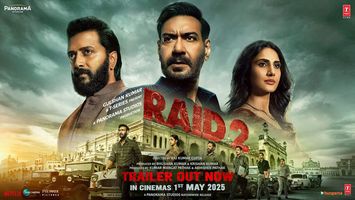1939 was a period when the world was plagued with turbulence and turmoil. Adolf Hitler's cruel aspiration for German expansion in Eastern Europe was becoming increasingly brutal and ruthless. Whereas another country, India, struggled in its battle for freedom against the British as the optimistic Mahatama Gandhi continued to request to his countrymen to accept a stand of non violence. A barren difference in ideologies even with an eventual common adversary, Gandhi one day planed to write a letter to the German tyrant... a letter he hoped would convince Hitler to change his mind and avoid the 2nd World War; to stay away from the enormous disaster that it would be the result of it.
After that Gandhi had written a 2nd letter to Hitler, and this time nearer to Hitler's own ruin, at a time when Hitler was snowed under with disloyalty all around him while restricted to an underground dugout. Viewers witness a difference in the ideologies of these 2 leaders and the well-known consequence of the brutal and catastrophic methods of Hitler.
Gandhi to Hitler looks at the downfall of Hitler and his last days when only his love Eva Braun and his faithful associate Joseph Goebbels were standing beside him, as Germany disintegrate around him and his faithful comrades left him; and through the innermost young couple Balbir and Amrita viewers watch that the destiny of many was decided by the ideology that they had chosen to take on.
The movie sets up the dominance of Gandhism over Nazism, in that way giving the meaning of world harmony, a note that is still applicable in today's framework where the world is going on with to struggle with the dark clouds of terror campaign.

















